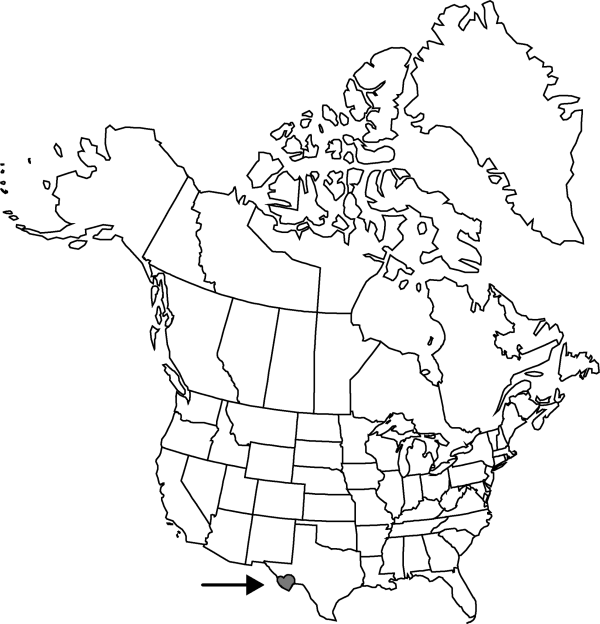Difference between revisions of "Thelocactus bicolor"
Bull. Torrey Bot. Clu b 49: 251. 1922.
FNA>Volume Importer |
imported>Volume Importer |
||
| (7 intermediate revisions by 2 users not shown) | |||
| Line 8: | Line 8: | ||
}} | }} | ||
|common_names=Glory-of-Texas;Texas pride | |common_names=Glory-of-Texas;Texas pride | ||
| − | |basionyms={{Treatment/ID/ | + | |special_status={{Treatment/ID/Special_status |
| + | |code=F | ||
| + | |label=Illustrated | ||
| + | }} | ||
| + | |basionyms={{Treatment/ID/Basionym | ||
|name=Echinocactus bicolor | |name=Echinocactus bicolor | ||
|authority=Galeotti ex Pfeiffer | |authority=Galeotti ex Pfeiffer | ||
| + | |rank=species | ||
| + | |publication_title=in L. K. G. Pfeiffer and C. F. Otto, Abbild. Beschr. Cact. | ||
| + | |publication_place=2: plate 25. 1848 | ||
}} | }} | ||
|synonyms= | |synonyms= | ||
| Line 20: | Line 27: | ||
}}<!-- | }}<!-- | ||
| − | --><span class="statement" id="st- | + | --><span class="statement" id="st-undefined" data-properties=""><b>Stems </b>3–38 × (2–)4–10(–18) cm; ribs 8–13 (plant often reaching sexual maturity while still entirely tuberculate); areoles spaced 6–20 mm apart along ribs. <b>Spines</b> (8–)12–30 per areole; radial spines (8–)12–20(–27) per areole, straw colored or white, contrasting with all other spines, 9–35(–45) × 0.3–1 mm, adaxial 1–3+ spines of areole strongly flattened, bladelike or ribbonlike, to 4 times wider than thick, 16–75(–100) mm (usually absent from sexually immature plants); central spines (9–)13–42(–58) × (0.2–)0.4–1.5 mm. <b>Flowers</b>: inner tepals rose-pink to magenta, marked with scarlet or orange proximally, sometimes with white band or margins near bases; stigma lobes reddish to red-orange or pale reddish brown or yellowish. <b>Seeds</b> finely papillate with strongly convex testa cells. <b>2n</b> = 22.</span><!-- |
-->{{Treatment/Body | -->{{Treatment/Body | ||
|distribution=Tex.;Mexico. | |distribution=Tex.;Mexico. | ||
|discussion=<p>Varieties ca. 4 (2 in the flora).</p><!-- | |discussion=<p>Varieties ca. 4 (2 in the flora).</p><!-- | ||
| − | --><p>Thelocactus bicolor varies geographically, and an indefinite number of segregate taxa may deserve recognition in Mexico.</p> | + | --><p><i>Thelocactus bicolor</i> varies geographically, and an indefinite number of segregate taxa may deserve recognition in Mexico.</p> |
|tables= | |tables= | ||
|references= | |references= | ||
| Line 48: | Line 55: | ||
-->{{#Taxon: | -->{{#Taxon: | ||
name=Thelocactus bicolor | name=Thelocactus bicolor | ||
| − | |||
|authority=(Galeotti ex Pfeiffer) Britton & Rose | |authority=(Galeotti ex Pfeiffer) Britton & Rose | ||
|rank=species | |rank=species | ||
| Line 59: | Line 65: | ||
|publication title=Bull. Torrey Bot. Clu b | |publication title=Bull. Torrey Bot. Clu b | ||
|publication year=1922 | |publication year=1922 | ||
| − | |special status= | + | |special status=Illustrated |
| − | |source xml=https:// | + | |source xml=https://bitbucket.org/aafc-mbb/fna-data-curation/src/2e0870ddd59836b60bcf96646a41e87ea5a5943a/coarse_grained_fna_xml/V4/V4_406.xml |
|subfamily=Cactaceae subfam. Cactoideae | |subfamily=Cactaceae subfam. Cactoideae | ||
|genus=Thelocactus | |genus=Thelocactus | ||
|species=Thelocactus bicolor | |species=Thelocactus bicolor | ||
| − | |||
| − | |||
| − | |||
| − | |||
| − | |||
| − | |||
| − | |||
| − | |||
| − | |||
| − | |||
| − | |||
| − | |||
| − | |||
| − | |||
| − | |||
| − | |||
| − | |||
| − | |||
| − | |||
| − | |||
| − | |||
| − | |||
| − | |||
| − | |||
| − | |||
| − | |||
| − | |||
| − | |||
| − | |||
}}<!-- | }}<!-- | ||
-->[[Category:Treatment]][[Category:Thelocactus]] | -->[[Category:Treatment]][[Category:Thelocactus]] | ||
Latest revision as of 21:58, 5 November 2020
Stems 3–38 × (2–)4–10(–18) cm; ribs 8–13 (plant often reaching sexual maturity while still entirely tuberculate); areoles spaced 6–20 mm apart along ribs. Spines (8–)12–30 per areole; radial spines (8–)12–20(–27) per areole, straw colored or white, contrasting with all other spines, 9–35(–45) × 0.3–1 mm, adaxial 1–3+ spines of areole strongly flattened, bladelike or ribbonlike, to 4 times wider than thick, 16–75(–100) mm (usually absent from sexually immature plants); central spines (9–)13–42(–58) × (0.2–)0.4–1.5 mm. Flowers: inner tepals rose-pink to magenta, marked with scarlet or orange proximally, sometimes with white band or margins near bases; stigma lobes reddish to red-orange or pale reddish brown or yellowish. Seeds finely papillate with strongly convex testa cells. 2n = 22.
Distribution

Tex., Mexico.
Discussion
Varieties ca. 4 (2 in the flora).
Thelocactus bicolor varies geographically, and an indefinite number of segregate taxa may deserve recognition in Mexico.
Selected References
None.
Key
| 1 | Areoles and spines larger; spines red and white, (older spines weather to ashy white), yellow color-form absent; widespread in s Texas and Big Bend region | Thelocactus bicolor var. bicolor |
| 1 | Areoles and spines smaller; spines usually yellow (rarely red, 0-5% in all populations); only in Marathon Basin of n Brewster County, Texas | Thelocactus bicolor var. flavidispinus |